The era of the Internet of Things (IoT) is accelerating, becoming a vast potential market. In the field of low-power wide-area networks, various connection technologies are fiercely competing. Currently, the LoRa connection method, based on American chip technology, faces significant limitations due to issues related to security and continuous supply. Many Chinese companies involved in LoRa are seeking solutions and hoping to transform as soon as possible.
However, we have recently observed some Chinese LoRa companies attempting to circumvent national legal regulations: in their promotional content, they imply that their LoRa gateways and other devices comply with national requirements regarding frequency and transmission power, and they recommend these to industry enterprises in fields such as smart smoke detection and smart parking.
Some netizens have keenly identified the issues and pointed out that these LoRa devices are non-compliant, posing significant compliance and legal risks. Moreover, the product contracts signed between the users of LoRa devices and the manufacturers are also non-compliant and illegal. So, what specific legal risks do these LoRa devices present? How should industry enterprises respond?
01
Some LoRa Products Are Severely Non-Compliant
LoRa aims to be classified as a low-power device, thus needing to meet the relevant national requirements. In November 2019, the Ministry of Industry and Information Technology of the People’s Republic of China reached Document No. 52 of 2019 after widely soliciting opinions from various sectors of society. Therefore, all parties must jointly comply with the provisions of Document No. 52.
According to this regulation: “The use of low-power devices must not arbitrarily change the usage scenario, expand the transmission frequency range, increase the transmission power (including the additional installation of RF power amplifiers), or arbitrarily change the transmission antenna.”
We note that Document No. 52 states that from January 1, 2020, the production or import of devices that do not comply with this announcement but comply with Document No. 423 and Document No. 61 must cease. Until January 1, 2022, it is permissible to produce or import LoRa devices that do not comply with Document No. 52 but comply with Document No. 423, provided that a radio transmission equipment model approval certificate is obtained. The aforementioned low-power devices that have been legally used under the original regulations can be used until they are scrapped.
It is evident that manufacturers producing products that comply with Document No. 52 do not need to obtain a radio frequency usage permit, a radio station license, or a radio transmission equipment model approval, but they must meet the requirements of Document No. 52 regarding product specifications, usage scenarios, and specific requirements.
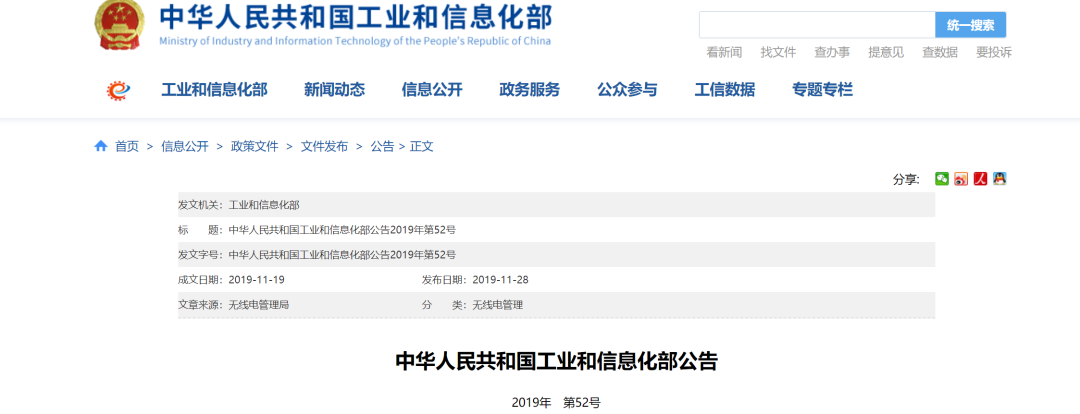
Currently, no LoRa devices have been approved to obtain a radio transmission equipment model approval certificate. According to these regulations, some manufacturers’ LoRa devices exhibit obvious compliance issues. For instance, we can see from the Ministry of Industry and Information Technology’s approval database that two manufacturers involved in LoRa chips and modules have not obtained model approval for LoRa-related products.

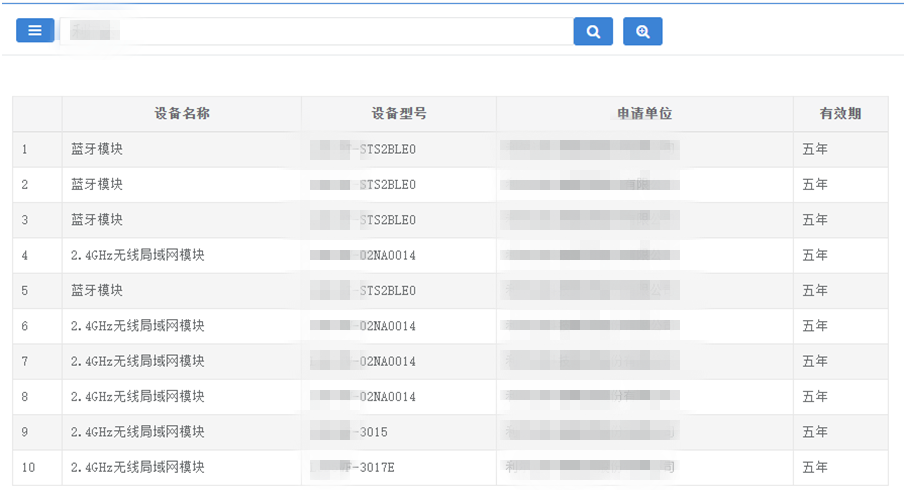
If a manufacturer produces LoRa devices without approval and engages in market activities, it is clearly a non-compliant behavior that poses significant legal risks.
At the same time, we also find that both Document No. 52 and Document No. 423 explicitly require that the transmission power must not exceed 50mW (17dBm) as a mandatory requirement, and it is clearly stated as e.r.p power (including antenna gain). However, some LoRa devices evidently do not meet this transmission power requirement.
There is even a LoRa company that, in order to circumvent the regulations, swapped concepts in its promotions, replacing device transmission power with e.r.p power. The maximum transmission power of such terminal and gateway products exceeds 17dBm, making them ineligible for approval or non-compliant with Document No. 52.
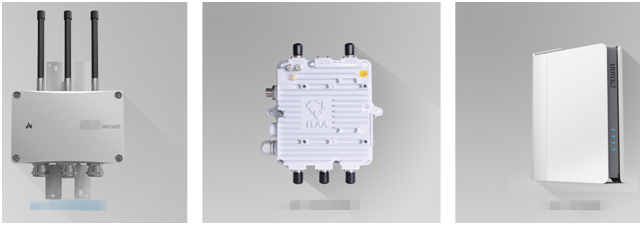



In addition to the power regulations, both Document No. 52 and Document No. 423 clearly specify the usage scope of LoRa, which cannot be used in any public utility scenarios, such as enterprises, industrial parks, agriculture, transportation logistics, and other non-civilian scenarios. Civilian metering devices need to be defined by the National Metrology Bureau.
Therefore, the application of LoRa in smart smoke detection, smart parking, and other non-civilian metering businesses constitutes a violation of regulations. The metropolitan networks (such as LoRa metropolitan networks) built by cities and enterprises are also considered illegal constructions that need to be dismantled.
02
National Laws and Regulations Have Clear Punitive Measures
For the aforementioned illegal activities, national laws and regulations have clear handling provisions, which we will popularize. The “Radio Management Regulations of the People’s Republic of China” have been in effect since December 1, 2016.
The second article of the first chapter of this regulation states:
Using radio frequencies within the territory of the People’s Republic of China, setting up and using radio stations, developing, producing, importing, selling, and maintaining radio transmission equipment, as well as using non-radio devices that emit radio waves, must comply with this regulation.
The national radio management authority is responsible for nationwide radio management work, formulating radio management policies and guidelines based on its responsibilities, uniformly managing radio frequencies and radio stations, and overseeing radio monitoring, interference investigation, and foreign-related radio management, among other tasks.
Article ten states:
The radio management authorities of provinces, autonomous regions, and municipalities directly under the central government are responsible for radio management work in their administrative regions, excluding military systems, under the leadership of the national radio management authority and the people’s governments of provinces, autonomous regions, and municipalities. They implement radio frequency usage permits according to approval authority, review the construction layout and site of radio stations, issue radio station licenses and radio station identification codes (including call signs), and are responsible for radio monitoring and interference investigation in their administrative regions, coordinating and handling radio management-related matters.
Provincial and autonomous region radio management authorities may establish branch offices within their administrative regions as needed. Branch offices perform their duties within the scope authorized by the provincial or autonomous region radio management authority.
Does the Radio Management Bureau not care about this?
We found that the Radio Management Bureau issued a document on April 10, 2020, titled “Notice on Urging Enterprises to Strictly Handle Radio Transmission Equipment Model Approval Permits in Accordance with the Law and Regulations.” This notice is an important reference for handling non-compliant LoRa products.
The notice states: “Producing or importing radio transmission equipment for sale and use within China, except for the nationally specified low-power short-distance radio transmission equipment, must obtain a radio transmission equipment model approval certificate in accordance with the law and comply with the supervision and inspection of the radio management authority.”
The notice provides methods for handling violations: “For a few enterprises recently found to be interfering with the normal order of model approval work, we have conducted video and written interviews one by one, pointed out their violations, explained the relevant laws and regulations of radio management, and required enterprises to deeply study the relevant provisions of radio management, thoroughly investigate the reasons, strengthen internal control, and complete problem rectification within a specified time to prevent similar issues from occurring again. For enterprises that are found to have similar violations after this notice or that reappear similar violations after rectification, we will increase supervision and punishment, investigating and handling each case without leniency.”
The discovery of violations by the Radio Management Bureau means that LoRa devices are non-compliant and will be investigated; it also indicates that the product contracts signed between users and manufacturers based on the relevant devices are non-compliant and illegal.
03
LoRa Companies Bear Risks, Enterprises Should Operate Legally
Based on the above analysis, LoRa manufacturers, sellers, and users each bear significant responsibilities and operational risks. We have searched for relevant regulations and share them as follows.
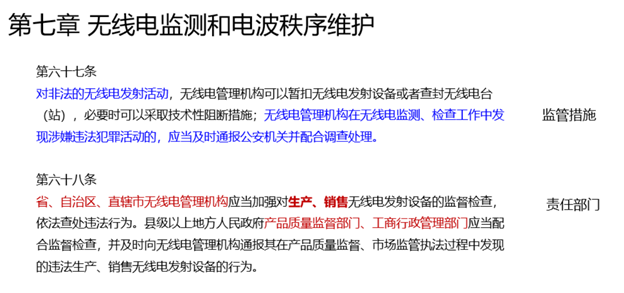
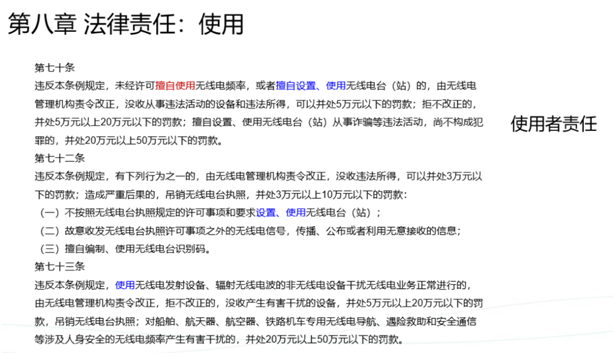
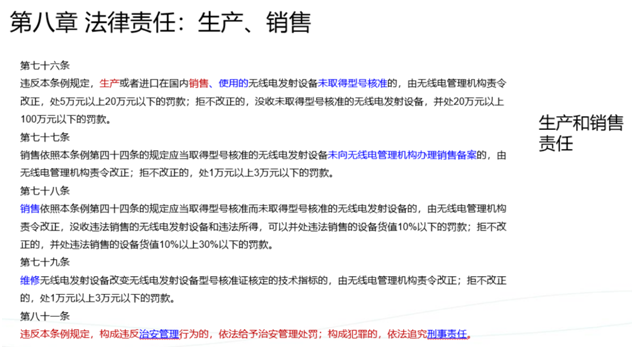
In our country, where socialist rule of law is upheld, market activities in the IoT sector must adhere to the principles of “having laws to follow, following the laws, strict law enforcement, and holding violators accountable.”
From a technical perspective, LoRa technology has always had some flaws, such as insufficient security (encryption, interference) and significant risks in continuous supply.
On one hand, regarding security, LoRa technology chose an unlicensed frequency band from the outset, which, while beneficial for the large-scale promotion of LoRa networks, has buried hidden dangers for future network security.
Currently, with the significant increase in the number of IoT terminal connections, the entire IoT industry faces increasing security threats such as terminal identity spoofing, data tampering, illegal upgrades, and privacy breaches.
In the context of massive access at the scale of hundreds of millions, enterprises using LoRa technology, which has not been validated by the network security technology field and market, and which is not globally standardized, cannot ensure the security of large-scale commercial use in the IoT market.
On the other hand, regarding business continuity, LoRa technology is monopolized by foreign companies, making it difficult to ensure national security. Recently, the U.S. has added 33 Chinese entities to its entity list, unilaterally sanctioning them by cutting off supplies.
In the current complex political environment (with the ongoing Sino-U.S. trade disputes), LoRa, which is exclusively monopolized by the American company SEMTECH, has its terminal and gateway chip IP patents solely controlled by SEMTECH, posing significant risks to the Chinese market.
From the perspective of national IoT industry development and the long-term interests of Chinese companies, LoRa technology presents significant hidden dangers: potential risks of chip bans, high patent fees, data theft, and network control.
In the first half of 2019, a well-known domestic communication company was sanctioned by the U.S. government, leading to a shock paralysis of the company, resulting in significant economic and political losses, and even subsequent fines and allowing Americans to settle in, which was quite humiliating. This serves as a profound lesson for all countries and industries globally. We should learn enough from this.
In response to the challenges in the IoT field, the Ministry of Industry and Information Technology’s Document No. 52 has made clear regulations regarding power, transmission duration, number of transmission channels, application locations, application businesses, and frequency interference to ensure the healthy development of China’s IoT industry.
In the context of Document No. 52, industry insiders generally believe that LoRa technology carries significant compliance risks. LoRa device manufacturers and sellers should be cautious in their investments. This also means that the vast market left vacant after the exit of 2G IoT technology and the emerging IoT market are unrelated to LoRa technology.
Those industry clients who have already deployed LoRa will need to incur additional costs to retrofit LoRa to meet national regulations, requiring software upgrades and an increase in device numbers, not to mention the substantial operational and maintenance work required for self-built LoRa networks.
Therefore, we believe that the development prospects of LoRa technology in China in 2020 remain bleak, with too many uncertainties and risks. These severely undermine industry users’ confidence in LoRa. Companies involved in the LoRa industry should urgently seek alternatives and transform as soon as possible; a short pain is better than a long one.

Huang Haifeng, a technology media person with 12 years of experience, researching 5G, mobile phones, IoT, optics, the internet, cloud, and AI.
Focusing on on-site reporting, valuable insights, observations, and disclosures.
This account covers platforms such as Toutiao, Baidu, Sohu, Phoenix, Sina, NetEase, Zhihu, Tencent News, Yidian Zixun, Weibo, and Dayu.
Contact: 174455367